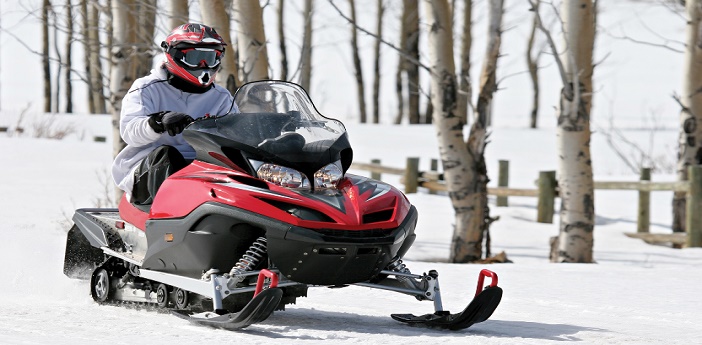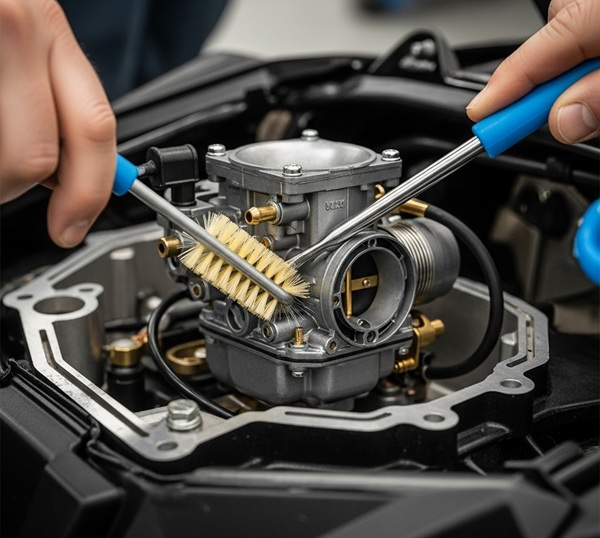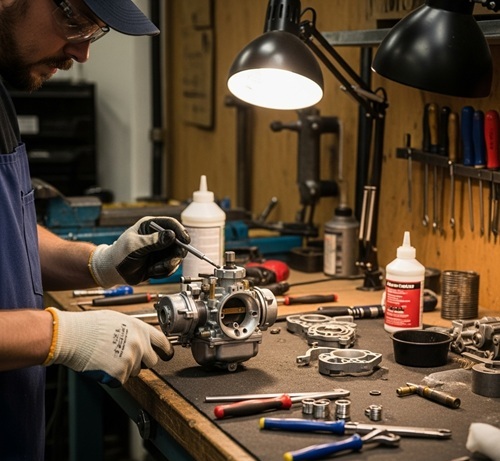
Inspecting and cleaning up your snowmobile’s carb and other parts is necessary when you are preparing your vehicle for winter. Let’s explore how you can do that efficiently…
Snowmobiles became popular from their beginning in the 1900s. It’s a lightweight vehicle designed to drive on ice, snow, and other low-traction environments.
Mostly the vehicle is used in the Arctic regions for transportation when the roads are covered with snow. Its specialized design possesses a very low center of gravity and a broader distributed weight with powerful traction – making it suitable for the climate.
Those who desire to take a break from their busy schedule also go for snowmobiling to have a great time. These are used for fun and recreation when the snow is good enough for winter sports and activities.
However, you need to take proper care of your snowmobile so that it runs in good condition throughout the season. This means pre-season maintenance is essential for a great hassle-free ride. This is like a regular checkup of the vehicle, which begins in early November before Christmas rings in.
What Parts to Repair and Replace?
Not everything needs to be replaced – you only need to replace the spark plugs, fuel filter, oil, and oil filter before the season.
Once they are done, make some simple inspections to experience the smooth ride of the engine and components. This involves checking the:
- Steering and lights
- Throttle and track
- Tighten the bolts and nuts
- Check the alignment and condition
- Check the drive belt and battery charge
- Lubricate the chassis a few times every season and
- Make sure that the brakes are in good condition, which can stop you in the required situation on the snowy terrain
How to Clean a Snowmobile Carburetor?
A snowmobile carburetor can accumulate dirt, varnish, and fuel residues over time, especially when left unused for extended periods. If your Mikuni, Yamaha, Polaris, or other snowmobile is idling poorly, bogging under throttle, or failing to start, a dirty carburetor may be the culprit.
While the most thorough cleaning method involves removing and disassembling the carburetor, you can still achieve effective results with a targeted cleaning process—without full removal.
1. Access the Carburetor
Begin by removing any panels or components that obstruct access to the carburetor. Ensure the engine is cool, and disconnect the battery or ignition source for safety.
2. Remove the Carburetor Bowl
Locate the float bowl at the bottom of the carburetor. This is where fuel typically collects and residue often builds up. Carefully remove the bolts or screws securing the bowl. Place a container underneath to catch any residual fuel.
3. Pull Out the Jets
Use a screwdriver or suitable tool to gently extract the main jet and pilot jet. These are small orifices through which fuel flows, and they can become clogged with debris or varnish.
4. Spray the Carb Cleaner
With the jets removed, spray the carburetor cleaner directly into the exposed orifices, including:
- Main jet and pilot jet ports
- Float bowl area
- Pilot air jet
- Needle and seat area
Insert the straw nozzle into each opening to ensure targeted spray delivery. If available, use compressed air to blow out loosened debris.
5. Clean or Replace Jets
Inspect the jets for blockage. If clogged, soak them in carb cleaner and use a fine wire or jet cleaning tool to gently clear the passage. Replace them if they are damaged or excessively corroded.
6. Respray and Let Sit
After the initial cleaning, spray the internal areas again to ensure full saturation. Allow the cleaner to sit for a few minutes to break down stubborn deposits.
7. Reassemble the Components, Start and Test the Engine
Once clean, reinstall the jets and reattach the float bowl securely. Double-check for proper fitting and no loose parts.
Reconnect the battery or ignition, and start the engine. Let it idle for a few minutes. Listen for improvements in engine smoothness and throttle response. If issues persist, a deeper clean or full disassembly may be necessary.
For detailed guidelines and instructions on how to clean your snowmobile/snowblower carbs, you can also check the video below…
How Does Using Ultrasonic Cleaner Machine Help?
It is said that snowmobiles, snowblowers, or ATVs are very maintenance-intensive.
It involves regular checkups of the parts and fuel system, mainly dealing with any gas gone missing inside the vehicle laid up during the offseason. It is because when a simple trace of oil is left in the vehicle engine, solid deposits known as varnish deposits form in the fuel, leading to the jamming up of carburetor jets.
An ultrasonic cleaner for cleaning the snowmobile carburetor is one of the best solutions for you to get your jammed carburetors cleaned up. Particularly if you plan to remove the carb.
Ultrasonic cleaner machines remove dirt and grime on the carburetors with chemical cleaning liquids and sound waves. The cleaning agents used in an ultrasonic cleaner reach the most difficult unreachable areas and clean them thoroughly without damaging the parts.
The frequency of your snowmobile carburetor cleaner should be adjusted concentration of dirt buildup, the size and type of the machine, and its usage conditions.
For heavily used or larger-displacement snowmobiles, more frequent cleaning may be necessary, especially if they’re exposed to extreme temperatures or inconsistent fuel quality.
Additionally, some carburetor cleaners come with a heat-activated functionality, which helps dissolve stubborn carbon and varnish deposits more effectively. This feature can be particularly useful in cold-weather environments, where thick residues are harder to break down.
Overall it is very efficient in removing dirt as compared to doing it manually.
To reduce the cost of buying ultrasonic cleaners many owners try out building an ultrasonic cleaner on their own. Online help is available for such creators and one can quickly get the step-by-step instructions for building a DIY ultrasonic cleaner.
Preparing Snowmobile For Summer Storage – Tips and Ideas
As you have used the snowmobile or an ATV the whole winter season, it is time to clean it and park it in the garage to use immediately for the next year’s winter season.
If you are making your living in snowy areas, then it is essential to follow and perform maintenance of your vehicle, as it increases the longevity of your vehicle for sure.
You need to follow the below-given tips so that you can use your vehicle without any problem.
- Keep the engine properly tuned and maintain the level of fluids.
- Check the skis and carbides, including the track.
- Examine the seat cover for tears or nicks.
- Give a simple and visual inspection of the rear suspension and the parts for noticeable damage.
- Check the missing plugs or missing track clips to avoid any track damage in the future.
- Check exhaust springs with mounts to ensure they are all tight and in their place.
- Go through the tall lights, hand warmers, electrical systems, and headlights.
- Check the shocks as they need to be rebuilt when they get alleviated.
- In addition, look over brake fluid, gasoline, studs and belts, chaincase oil, and engine coolant.
Be aware that not every user is a mechanic, so it often becomes tough to complete all these checklists. But with some common DIY tips and guides, you can easily learn about the ways of maintenance and care to handle the problems individually.
Make a perfect check of all the above-said components, and follow maintenance tips to have the best and proper condition snowmobile/ATV to take on a jaunt for the coming winter season without any problem on the track.


